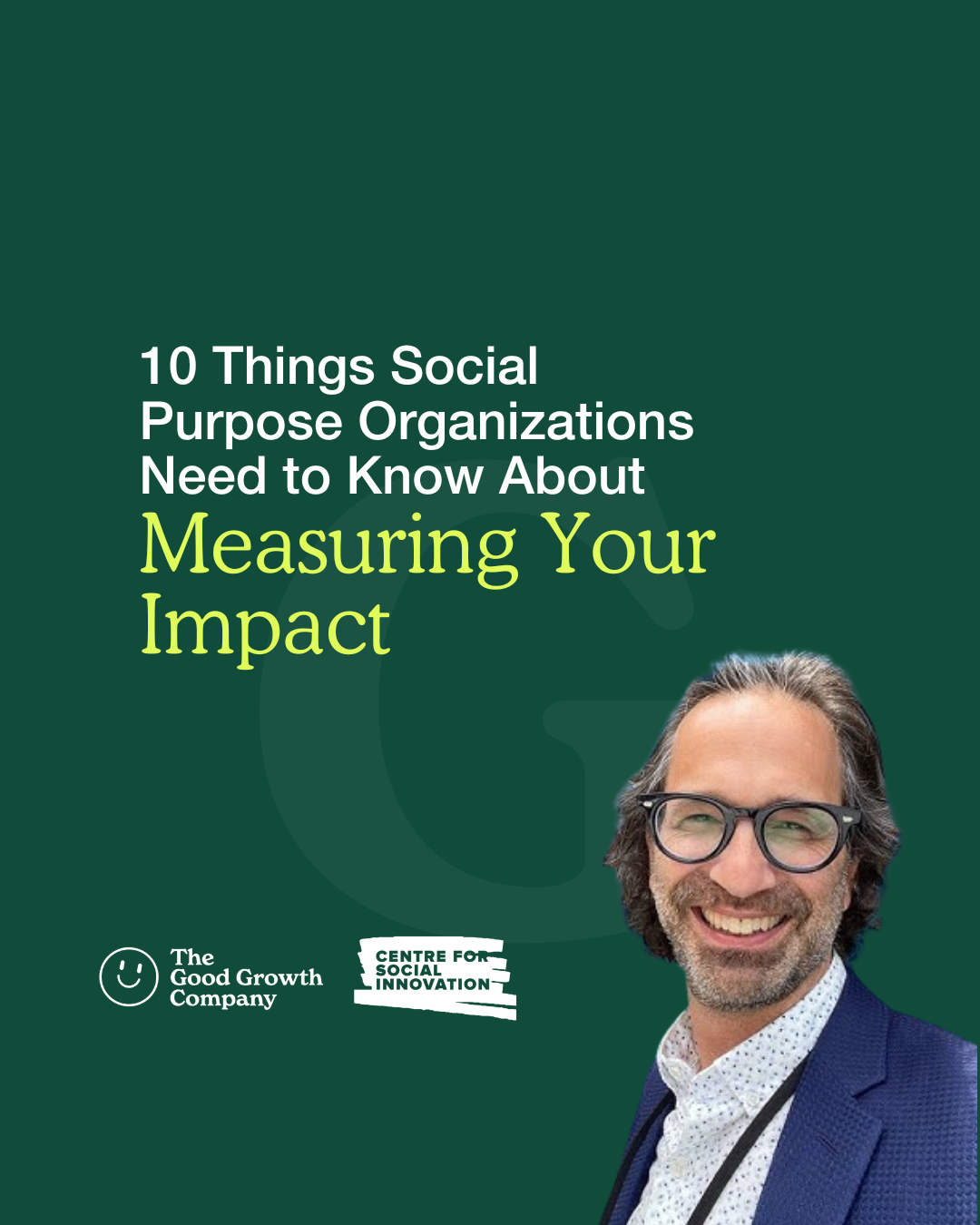How to Measure Your Impact: Top Tips for Nonprofits
Stop Measuring Everything. Start Measuring What Matters.
Measuring your impact doesn’t need to be complex or costly. In fact, small and mid-sized nonprofits are often in a better position to build effective, meaningful measurement systems—without getting lost in data for data’s sake.
In this session of The Good Growth Company’s 10 Things series, our guest Gordon Goldschleger broke down the essentials of outcome measurement in a way that’s accessible, actionable, and designed with nonprofit realities in mind.
From reframing how we define success, to using tools like Theory of Change and Results Chains, Gordon helped attendees shift their thinking from reporting activities to demonstrating real-world change.
Top Takeaways
1. Measurement is a mindset, not a department
You don’t need a full evaluation team to measure impact. Instead, you need a learning culture, where your whole organization is focused on what’s changing—not just what you’re doing.
“It’s not about chasing metrics—it’s about learning, improving, and growing your impact.”
2. Understand the difference between outputs and outcomes
Outputs are what you do. Outcomes are what changes. Many nonprofits spend too much time tracking activities, when funders and communities really want to see the difference you’re making.
3. Theory of Change: Your north star
Think of your Theory of Change as a map that links your activities to your long-term goals. A simple version is often better—one that clearly connects what you do every day to the change you want to see.
“If your team doesn’t understand your Theory of Change, it’s too complex.”
4. Results Chains help you zoom in
While Theory of Change zooms out, Results Chains zoom in. They show how each part of your work contributes to the overall impact, helping teams stay focused and connected to purpose.
5. Right-size your measurement tools
You don’t need a giant dashboard. In fact, Gordon recommends keeping your tools lean and functional—things like Google Sheets, Airtable, or free survey tools. Focus on collecting the few data points that matter most.
6. Measurement starts before the work begins
Don’t wait until a grant is done to figure out what you should have been measuring. Bake evaluation into your planning process—especially when designing new programs or preparing for funding.
7. Use measurement to drive better storytelling
Data is only powerful when it’s connected to your narrative. Think about how your numbers and outcomes support your case for support, build donor confidence, and inspire action.
8. Don’t collect data you’re not using
If your team is collecting a metric that no one is reviewing or using to make decisions, it’s time to let it go. Gordon calls this “zombie metrics.” Keep your measurement meaningful and strategic.
9. Buy-in matters
Impact measurement won’t succeed if it’s seen as a reporting burden. You need staff, board, and funder buy-in — which means making the case that good measurement helps everyone succeed.
10. Build a culture of reflection
Great measurement doesn’t just prove impact—it improves it. Encourage your team to reflect regularly on what the data is telling you. What’s working? What’s not? How can we adapt?
“Data should not only be reported up—it should be used across the team to learn and evolve.”
Your Questions, Answered
Q: How do we build a Theory of Change if our programs are still evolving?
Gordon suggests starting with a basic draft — even a rough sketch. Your TOC should be a living document. Begin with the outcomes you hope to create and backtrack to how your programs connect. Don’t let perfection delay progress.
Q: Our funders all want different metrics. What do we do?
Create one internal framework that works for your organization, then map funder metrics onto that. Otherwise, your team will burn out chasing fragmented reporting with no strategic value.
Q: How do we measure “soft” outcomes like empowerment or belonging?
Use qualitative tools: surveys with scaled responses, open-ended reflection questions, or even focus groups. Stories and sentiment can be measured, just differently than numbers.
Q: What about when programs are too new for outcomes?
Track what you can and be transparent about the learning journey. Funders respect honesty when it’s paired with intention. Frame it as piloting with built-in evaluation.
What’s next?
Measurement doesn’t have to be a burden — it can be a powerful lever for growth. When used strategically, it can shape your programs, sharpen your storytelling, and strengthen your relationships with funders and stakeholders.
Start small. Stay focused. Measure what matters.
Want to watch the session? Join the Good Growth Membership to access the full recording and all previous sessions at thegoodgrowth.company/membership
Want more live sessions? Explore upcoming sessions in our free series: thegoodgrowth.company/journal/10things-series

